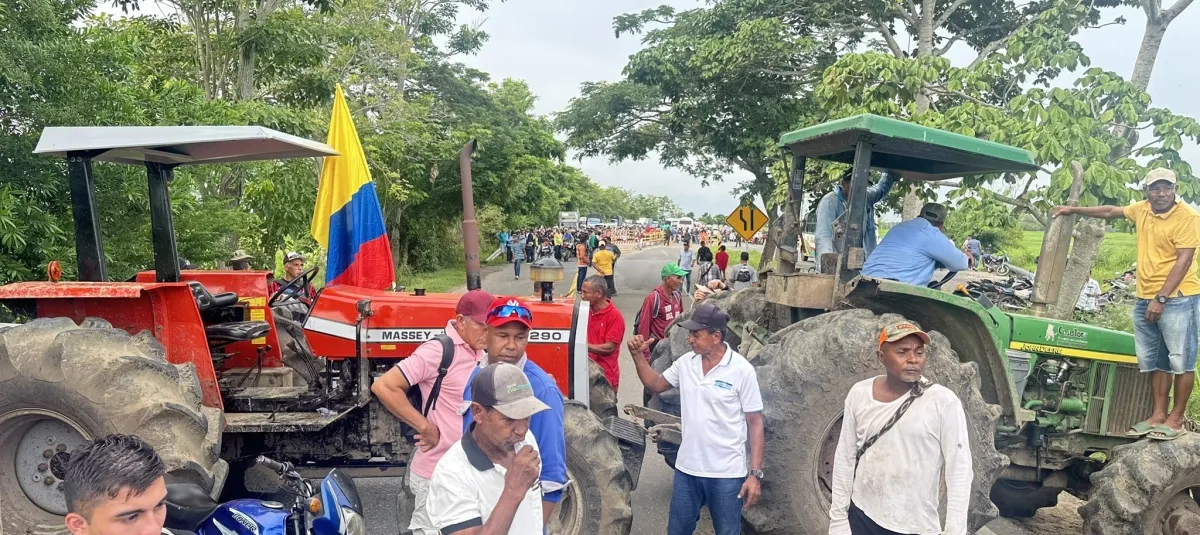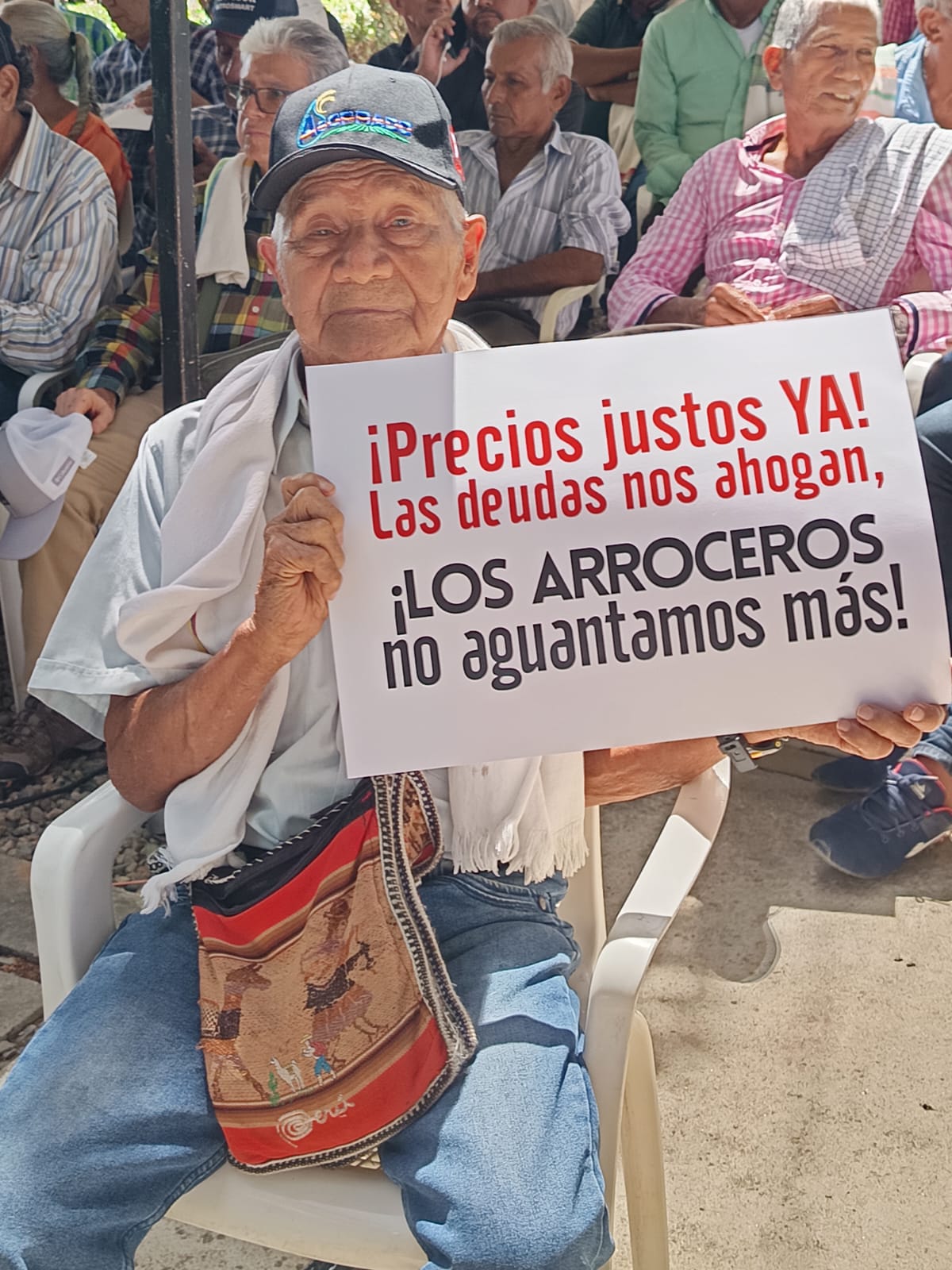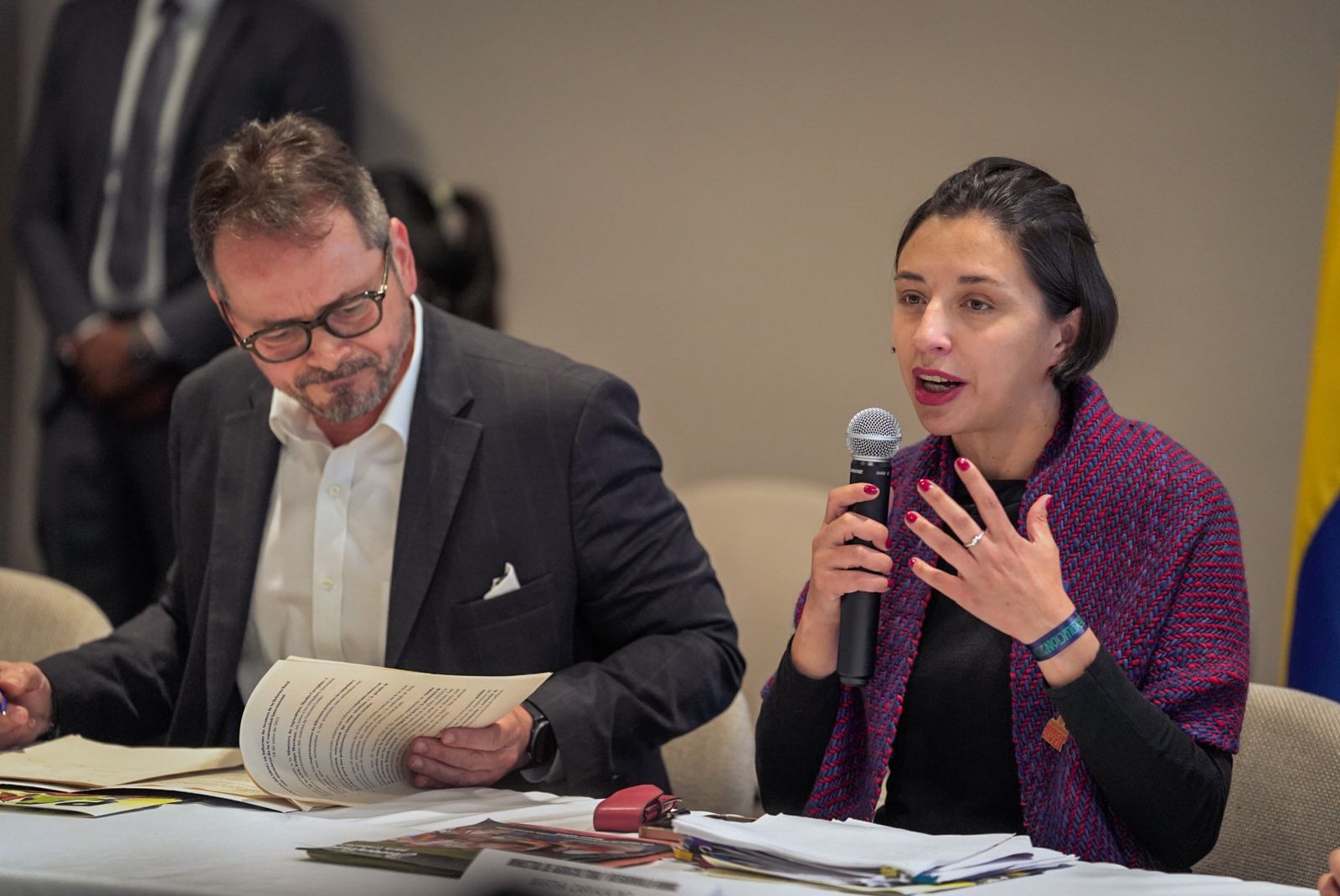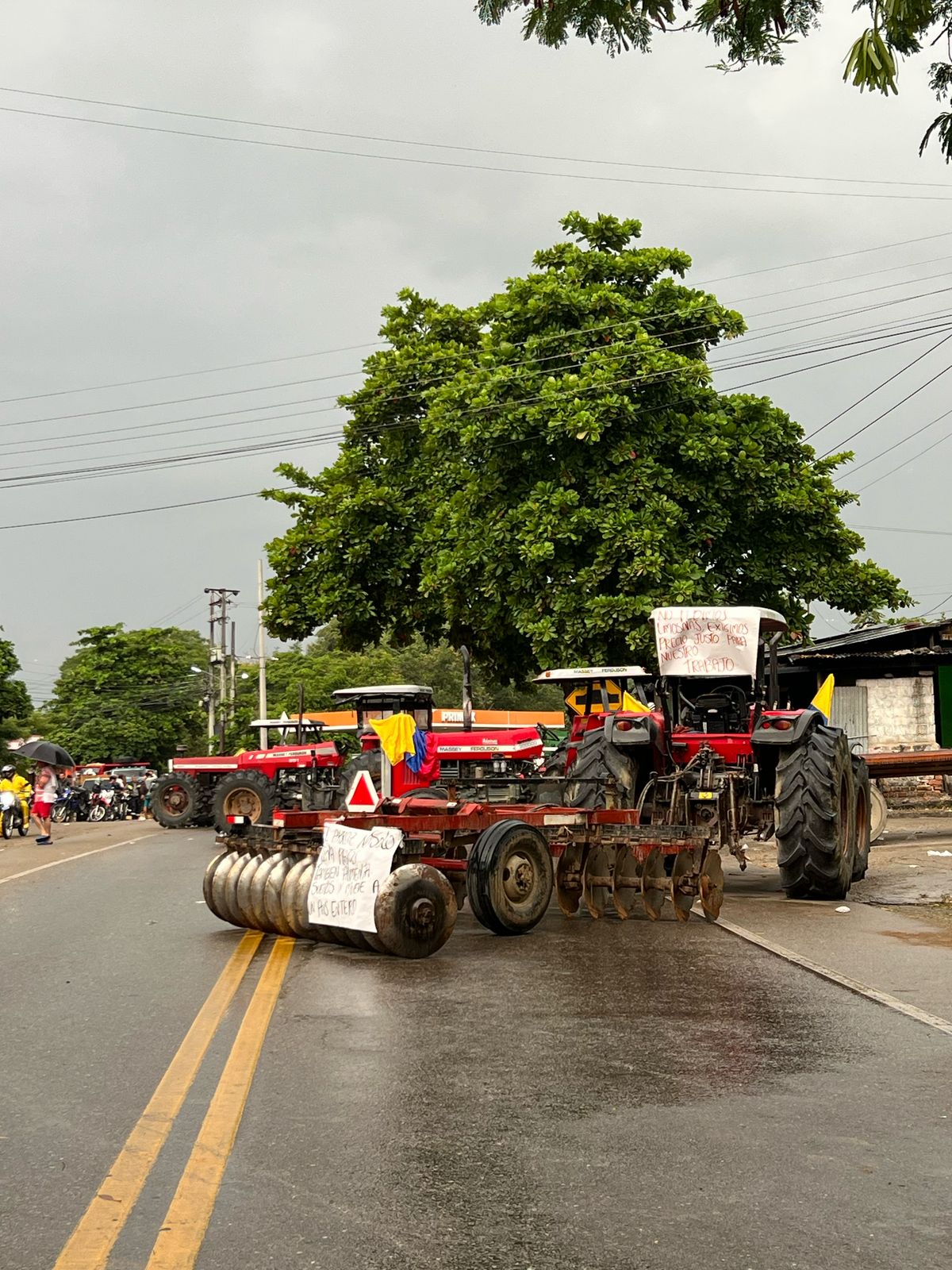The reasons that have led producers to call for Colombia's second rice strike in 2025

Rice farmers in Tolima, Huila, Meta, Casanare, Córdoba, and Sucre began a new indefinite national strike today, the second this year to protest the price crisis affecting the sector.

Dozens of people block the Lorica-Cereté dual carriageway. Photo: RPC Radio Lorica
Producers complain that the agreements signed in March with the Ministry of Agriculture following a nine-day strike were "ignored ." They also claim that the government has been postponing the structural solutions they need.
"The union will not participate in new dialogue tables without the presence of the Ministry of Agriculture, Commerce, and Environment, the Superintendency of Industry and Commerce, and representatives of the milling industry," stated the rice leaders from Tolima and Huila.
Immediate regulation Currently, they report losses of approximately 2,500,000 to 2,800,000 million pesos per hectare harvested, which is driving small and medium-sized producers in various regions into bankruptcy.
Therefore, they are demanding fair prices, as well as real and effective regulation of production and marketing. "We demand the adoption of a national policy to regulate the price of green paddy rice at the point of purchase, guaranteeing a fair price that should reflect at least production costs and a profit rate for the producer. It is unacceptable that we continue to harvest at a loss," the list of demands states.
The National Federation of Rice Growers (Fedearroz) warned about the decline in the price being paid to producers, which ranges between 10,000 and 15,000 pesos per load. "This situation is disastrous news for the sector. It directly affects the weakest link in the chain and adds to a worrying price trend that has been occurring since the beginning of 2025," stated the union led by Rafael Hernández.
According to the unemployed rice farmers, all members of the rice chain, such as producers, processors, marketers, and distributors, must be adequately compensated for their work. "We producers cannot continue to lose; we want to produce with dignity and avoid further financial ruin. This includes retroactive compensation for those who have already harvested and have not received marketing support," they assert.
While producers received a national average of around 225,000 pesos per load in June 2024, this price has now dropped to 170,000 pesos in the central region and to 158,000 pesos in the Llanos region.

Rice farmers' strike. Photo: Private archive
"There is a situation of inequity and great injustice against the production sector, because although farmers have been achieving production costs similar to those recorded in the United States, the deterioration in prices is so severe that it has wiped out the progress achieved thanks to the technological practices implemented, to the point that current prices do not even allow our farmers to reach the break-even point ," notes Fedearroz.
Compliance with agreements They also demand that the National Government fully comply with the commitments made during the March rice strike. These include expanding the beneficiaries and paying marketing support.
"A sharp drop in prices in December 2024 and another in June 2025 spells disaster in the face of rising crop costs . The agreements reached after the rice strike have been broken," said Óscar Eduardo Gutiérrez, leader of Dignidad Agropecuaria.
In March, the government presented rice growers with a resource package of nearly 72 billion pesos intended to address the structural problems plaguing the sector. Regarding marketing, 21.93 billion pesos were allocated to serve small and medium-sized producers, and of this fund, 40 percent was earmarked to support them in the sale of approximately 72,896 tons of grain.
Furthermore, the marketing strategy included opening up markets abroad with support from the Ministry of Commerce, ProColombia, and the Rural Development Agency. Additionally, local public procurement was strengthened so that rice producers could offer their cargo to national sector entities that require the grain to support their various social programs.
The announced agreements not only included financing for small and medium-sized producers, but also safeguards, phytosanitary management, a price stabilization fund, a supervised release policy , and a review of production costs—some of the agreements signed after the negotiations closed.
For example, regarding the issue of imports, it was agreed to work with the Ministry of Commerce to advance the relevant actions regarding the issuance of safeguards to protect domestic rice production.
Likewise, the Rural Development Agency (ADR) discussed establishing a cooperative agreement to combine efforts to promote the strengthening of the commercial, agroindustrial, and agrologistics capacities of small and medium-sized producer organizations with a view to entering different markets worth 10 billion pesos.

Martha Carvajalino, Minister of Agriculture. Photo: National Land Agency
Likewise, it was indicated that up to 7 billion pesos from the Agricultural Input Access Fund (FAIA) are available for small and medium-sized rice producers to use to reduce the costs of agricultural inputs for their production cycles.
"The demands are clear. Fair prices for domestic rice, as well as regulation, protection of the country's only strategic semi-annual crop, urgent review of the Free Trade Agreements (FTAs) that are depressing domestic production, effective control of imports and smuggling, and compliance with all agreements," they assert.
What has the Government done? The Ministry of Agriculture has not commented on the start of the rice harvest. However, a few days ago, the Minister of Agriculture, Martha Carvajalino, indicated that "urgent" measures will be taken for the start of the harvest, during which 3 million tons of rice are expected.
“We have found that the prices being paid have dropped more than expected. We are studying legal measures to regulate market prices and we already have a price control regime ,” explained Carvajalino, who added that support measures for agricultural inputs, as well as credit relief, direct support for the first harvest of the year, and technical roundtables to ensure continued rice production and fair prices are paid, remain in place.
According to the Ministry, between April 9 and June 30 , 120 billion pesos per ton were allocated to low-income small producers and 78 billion pesos to medium-sized producers . Additionally, by July, the program had processed more than 2,600 applications, with a total projected increase exceeding 15.7 billion pesos.

Colombian rice farmers say they need immediate solutions. Photo: Small and medium-sized rice producers
Likewise, the public procurement strategy is moving forward, and in June, the Faia arroz program, which aims to reduce agricultural production costs, was made available to producers. The current funding pool is 7 billion pesos, to be distributed among small and medium-sized rice producers in the Llanos, Bajo Cauca, Santanderes, Central, and North Coast regions.
Also published a few days ago was the draft resolution subjecting green paddy rice to the regulated price regime. This aims to ensure transparent pricing that reflects domestic market conditions and avoids losses for producers by establishing a minimum purchase price for green paddy rice , differentiated by region.
eltiempo




